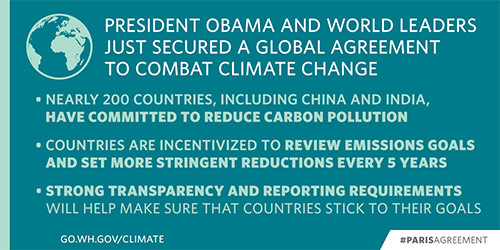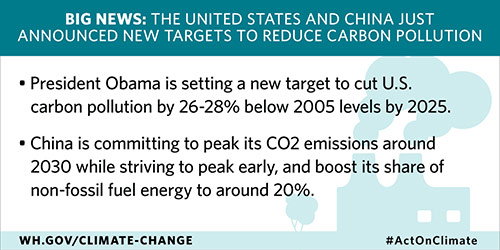
A Historic Commitment to Protecting the Environment and Reversing Climate Change
President Obama believes that no challenge poses a greater threat to our children, our planet, and future generations than climate change — and that no other country on Earth is better equipped to lead the world towards a solution.
That’s why under President Obama’s leadership, the United States has done more to combat climate change than ever before.






